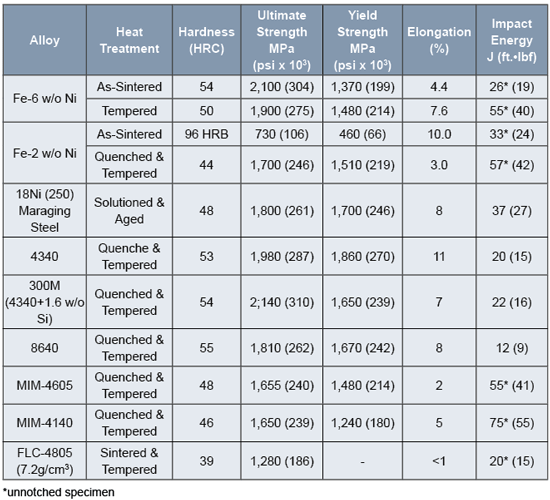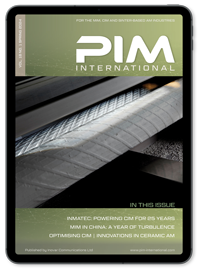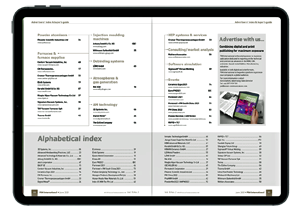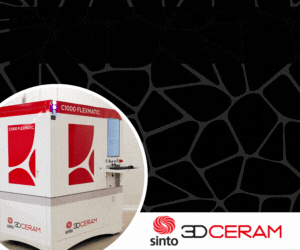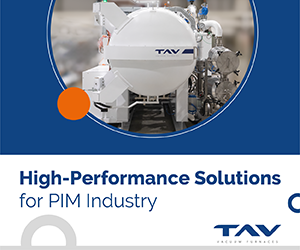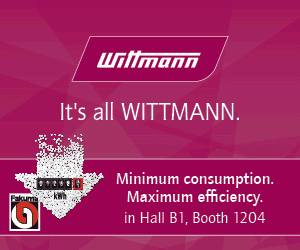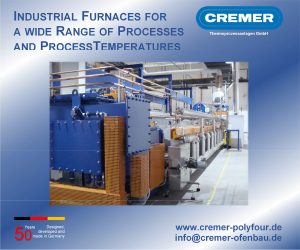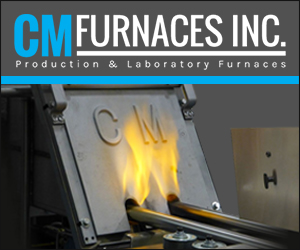New sinter-hardening alloy developed for high strength Metal Injection Moulded parts
August 8, 2012
As published in PIM International Vol 6 No 2 June 2012
Sinter-hardening ferrous alloys have been widely used for a number of years for the production of press and sintered Powder Metallurgy parts with ultimate tensile strength (UTS) around 1200 MPa and hardness values of 40 HRC at a sintered density of 7.2 g/cm3. However, elongation at this density level is relatively poor at <1%. Some ten materials standards have been developed by the Metal Powder Industries Federation (MPIF) for these sinter hardened alloys using mostly prealloyed steel powders, but new alloys are needed to achieve even higher strength, hardness and ductility.
An additional issue is dimensional control, which even at cooling rates of >30°C/min in the sintering furnace it is still sufficiently rapid to cause deformation and can limit dimensional control of the sintered parts. In metal injection moulding this potential lack of dimensional control can be even more critical because of the highly complex shapes of most of the MIM parts produced, and as yet no sinter-hardening MIM alloys appear to have been patented or registered in MPIF Standards.
Kuen-Shyang Hwang and Chen Hsu at the National Taiwan University in Taipei, together with colleagues from the industry in Taiwan, initiated a research programme five years ago to design a new MIM alloy that can be sinter hardened using standard cooling schedules (<30°C/min), without the need for rapid cooling such as gas quenching. They also set themselves a goal to obtain material properties comparable with those of heat treated MIM-4140 and MIM-4605, the latter having the highest strength according to the MPIF MIM standard. After quenching and tempering MIM-4605 has a UTS of 1655 MPa, a hardness of 48 HRC, and elongation of 2%.
The results of their research were published in the January/February 2012 issue of the International Journal of Powder Metallurgy. The researchers reported that a new MIM alloy was developed containing Fe-6Ni-0.8Mo-0.8Cr-0.4C and designated Fe-6 w/o Ni, together with Fe-2Ni-0.5Mo-0.4V (designated Fe-2Ni w/o Ni), which is a modification of MPIF MIM 4605 and which served as a benchmark for comparison of the research results.
The MIM alloy was produced from BASF carbonyl iron powder (3.8 micron) and the mixture of Fe, Ni, Mo and Fe-Cr elemental powders was kneaded with 7 w/o wax based binder and the resulting feedstock injection moulded. After solvent and thermal debinding, the moulded parts were sintered at 1330°C in vacuum and then furnace cooled to 900°C followed by fan cooling. The average cooling rate over the range of 600°C to 500°C was 25°C/min. Both new alloys were tempered at 200°C for 2 hrs.
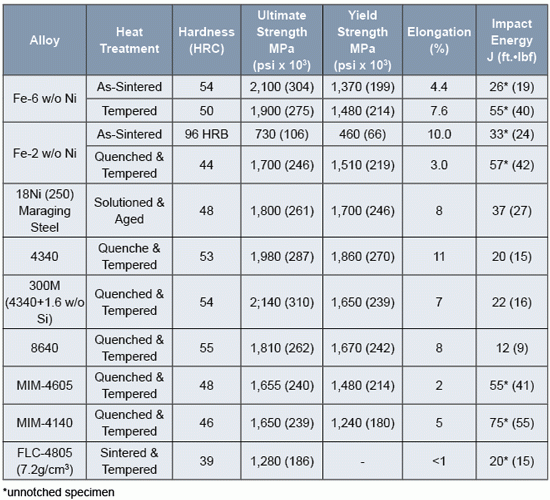
Table 1 Mechanical properties of fan-cooled Fe-6 w/o Ni, Fe-2 w/o Ni and wrought ultra high strength steels (from paper ‘’Ultrahigh strength Sinter Hardening MIM Alloy Steels’ by K-S Hwang, et al, published in International Journal of Powder Metallurgy, Vol 48, No 1, 2012, 35-43)
The authors reported that the use of fine powders and high temperature sintering resulted in a density of
7.63 g/cm3 (97.1% pore free density) in both the Fe-6 w/o Ni and Fe-2 w/o Ni materials with resulting ultra high strength and high ductility. In fact the mechanical properties are superior to those cited in MPIF standards for heat treated MIM-4605 and press and sinter-hardened FLC-4805, and were found to be comparable with those of ultra-high strength wrought steels (see Table 1). The UTS of the new sinter-hardened and tempered Fe-6 w/o Ni MIM alloy was found to be 1900 MPA, with a hardness at 50 HRC and elongation of 7.6%. This gives the material the advantage of not requiring quenching and tempering, unlike wrought 4360 and 8640 alloy steels.
The researchers also found that in terms of dimensional control the new sinter hardening alloy powder provided significant improvements in dimensional control in MIM parts production. Using production parts, the sintered and tempered Fe-6 w/o Ni specimens with a wall thickness of 15 mm showed a standard deviation of 0.007 mm compared with 0.021 mm in the quench-and-tempered Fe-2 w/o Ni parts. Flatness distortion was also reduced in the new alloy.
News | PDF Store | Magazine Subscriptions | What is PIM? | e-newsletter




